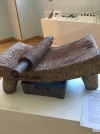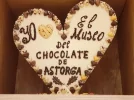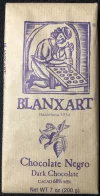Most people have a personal preference for chocolate. But, most people do NOT know that chocolate was introduced to Europe from the Americas during the 1500s. Returning explorers brought a selection of new and exotic items from what is now Central and South America, including:
- Tobacco
- Indigo (a dark blue - almost black dye - made from an indigenous plant)
- Corn / Maize
- Cacao - the precursor to chocolate
- Coco leaf and cocaine.
There are other products. I list only the first five that came to mind.
In the Americas, cacao beans were pounded and ground into powder and turned into a beverage and drunk by the higher elements of society. However, without sugar it was very bitter. Sugar cane was also a local ground item, so it was readily available to add - to taste.
Only after it spread in several European countries did someone - I forget who or where decided to mix in milk to the recipe. Voila! Milk chocolate!
You might, or might not know that the center of the very large Spanish chocolate industry was Astorga, on the
Camino Frances. When you next visit Astorga, check out the several stores that sell ONLY chocolate.
Valor appears to be the big Spanish brand. I can testify to its' excellence.
Churros and chocolate are never better than when taken at Astorga, at least IMHO. Yummy!
Hope this helps.
Tom



























